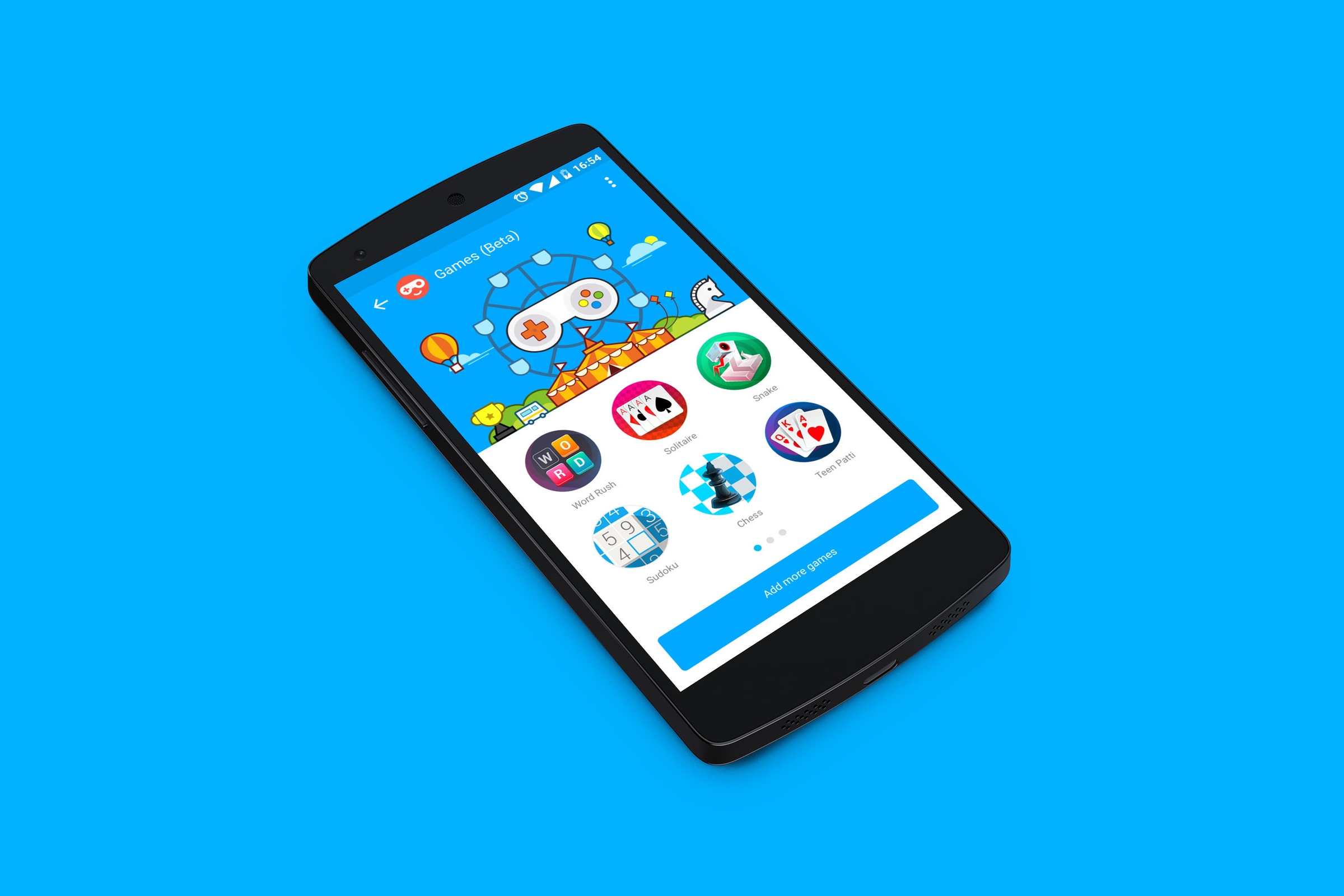
Games on Hike
Making a billion people smile, one game a day
Games on Hike
Introduction
In late 2015, our small team set out on an ambitious project to build games inside Hike Messenger. We believe that people doing activities together enhances their social interactions. Playing games together, specially enhances the interactions, be it physical or digital. For the business, people having richer interactions meant better engagement. Hence, more time spent, and a higher retention.
We started by building the games platform to enable people to play games inside Hike. To begin with, we launched simple, bite-sized classics like Snake, Solitaire, Sudoku, Chess, and Word Rush on Android only. Over the next one year, we added eleven more games to the platform based on requests by people. Our motive was - 'enable people to enjoy playing games without leaving their core social and messaging experience'. The tiny size of games on Hike also enabled everyone to enjoy the games regardless of the capability of their smartphones.
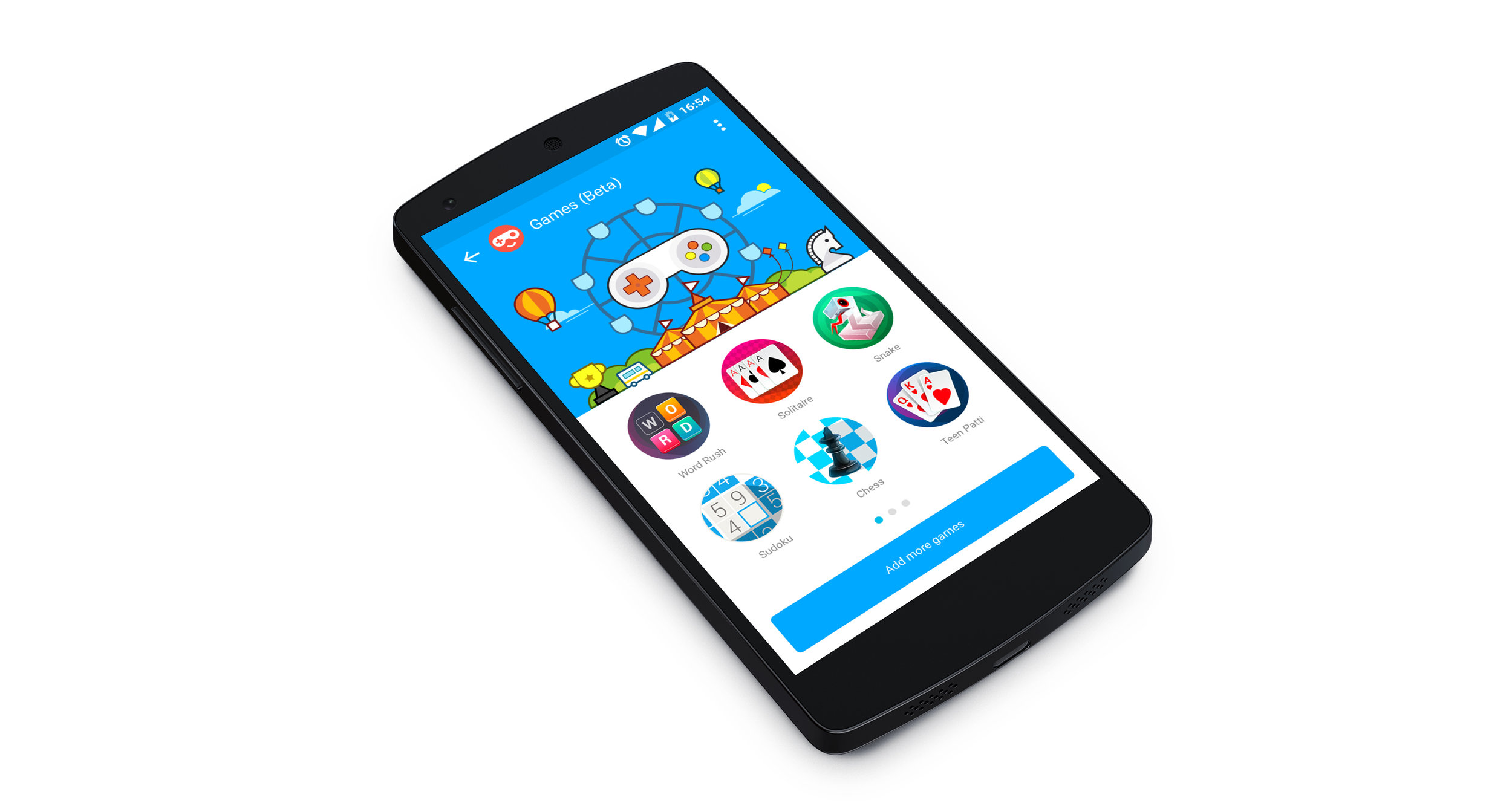
My Involvement
As an individual, I owned designing, prototyping, validation, and execution of the games platform inside Hike. I was directly responsible for solving the discovery, and access of the games. I also built frameworks to enable scaling of the platform in the future.
Additionally, I led a team of seven designers and artists to design the individual games. The aim was to design games with a cohesive, unified experience without compromising the richness or their core mechanics.
Key Results
Within a month of the beta launch, the platform achieved a 100 million unique game-plays with the first five games only. Players spent an average of more than 20 minutes per day playing these games alone. With the launch of further games, the time spent playing was increased to almost half an hour per day.
Design Process
From the beginning, the process was divided into two phases - Phase 1 to test stability of the new technology that was enabling us to build games inside Hike, or Minimum Viable Product. Phase 2 to enhance the experience for people to easily access, play, and have conversations driven by games, or Minimum Desirable Product.

We were building the frontend of the platform in HTML. For Phase 1, we kept the experience as close to native Android as possible by using the then familiar information cards on Kitkat. With the limited inventory of games, we deliberately kept the UI to be a simple list of cards. After initial usability tests for qualitative data, we rolled it to a limited cohort of users to gather quantitative data and possible bugs.
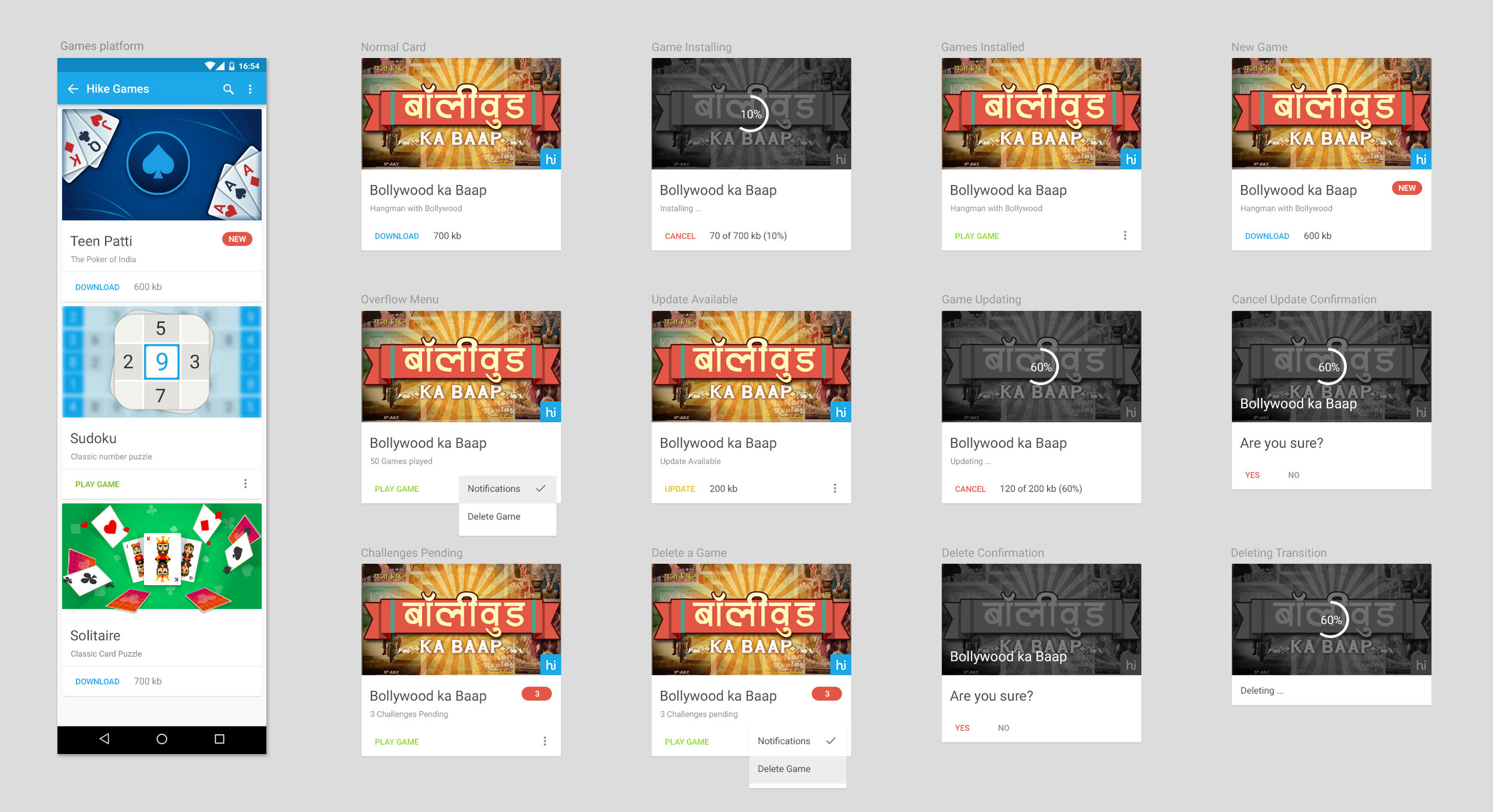
'Humble beginnings' - The first version of the platform relied on individual cards for games
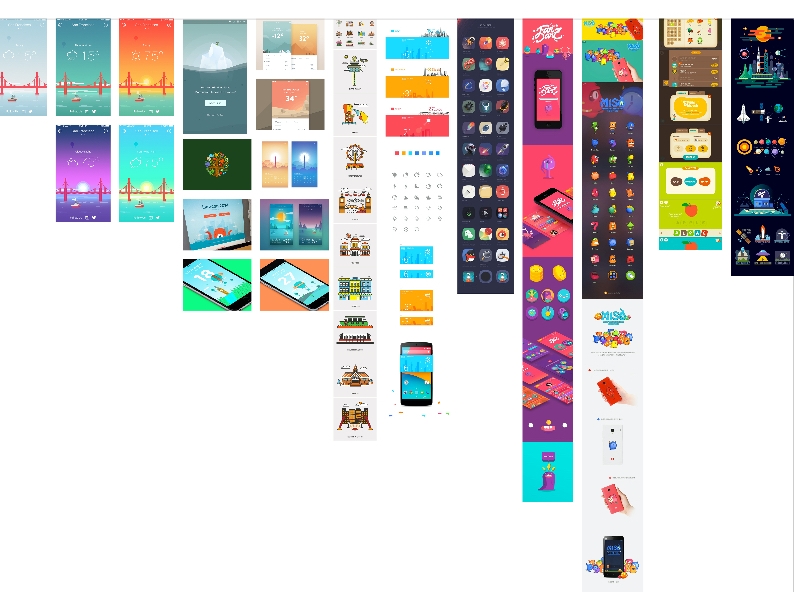
To create a rich and colourful experience, mood boards like this filled the walls of our office
While the engineers were testing the stability and performance, we started work on the enhanced experience of the games platform, that will give people a rich, and game like experience inside Hike.
Based on the feedback we received in the user studies, we were already brainstorming on solving the problems in the first version. We converged on replicating the experience of the mobile OS, yet again. We made sure that the learning curve, of downloading and playing the games, was zero by making people's experience similar to their behaviour on Android.
The primary learning, from the user tests of the first version, was to separate downloaded and not-downloaded games. Something akin to installed apps and the PlayStore. Other learnings informed us that the experience of the first version was 'too technical'. "It feels like an app, and not a place where I can play games", "It is not inviting" were some of the feedbacks we received from people.
We had a fairly confident plan to improve on the experience in the second version - the public beta. We separated, and simplified the user flows and tested them rigorously using prototypes made in Principle.
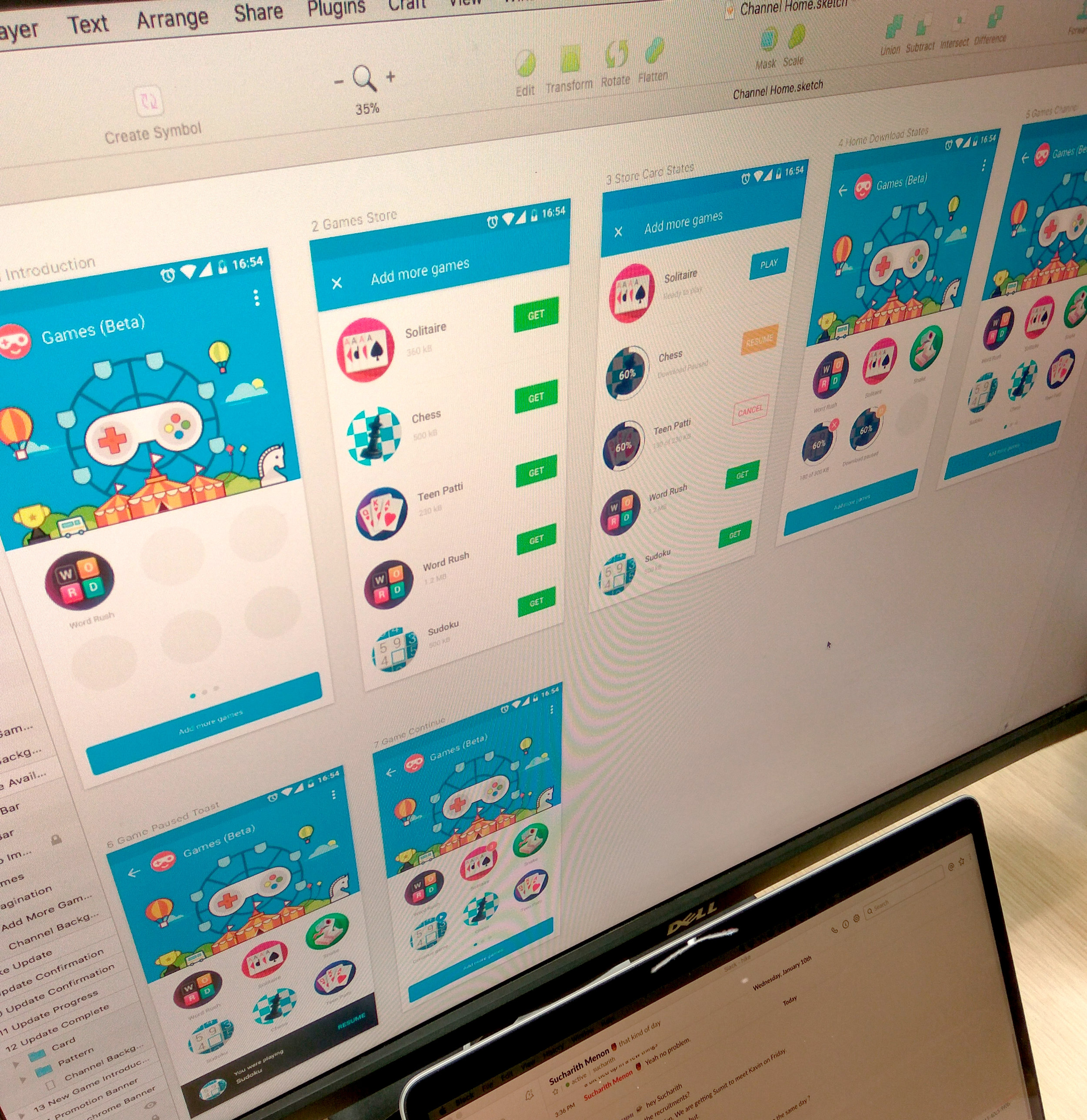
Fleshing out the user flows and UI states
